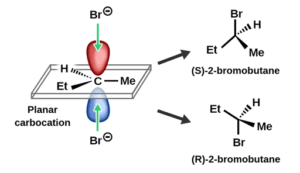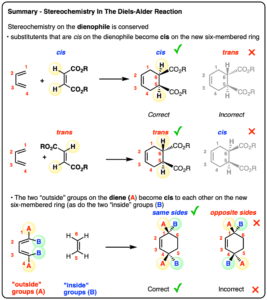Back to: Organic Chemistry 100 Level
Welcome to class!
Hello there, my brilliant scholar! It’s such a joy to have you here again. You’re doing an incredible job building your chemistry knowledge, and today, we’re entering one of the most exciting parts of organic chemistry—Stereochemistry. It might sound complex at first, but with me by your side, we’ll make it simple, fun, and absolutely relatable. Let’s go!
Stereochemistry
What is Stereochemistry?
Stereochemistry is the branch of chemistry that deals with the 3D arrangement of atoms in molecules and how this arrangement affects the molecule’s properties and reactions.

Imagine two slippers—both look the same from the top, but one fits your left foot and the other your right. That’s how some molecules are—same atoms, same connections, but arranged differently in space. And this small difference can change everything, from how a drug works in the body to how a fruit smells.
Why Is Stereochemistry Important?
In the real world, two molecules with the same atoms but different arrangements can behave very differently. For example, one version of a medicine may cure you, while another version (its mirror image) might be useless—or even harmful. This is why understanding stereochemistry is very important in pharmacy, food, perfumes, and even agrochemicals.
Key Terms in Stereochemistry
1. Isomers
These are compounds with the same molecular formula but different structures.

Structural isomers differ in how atoms are connected.
Stereoisomers have the same connections but differ in how atoms are arranged in space.
2. Types of Stereoisomers
There are two main types:
Geometrical (cis-trans) isomers: These are common in alkenes.
Cis: Same groups on the same side of the double bond.
Trans: Same groups on opposite sides of the double bond.
Example: In a compound like but-2-ene, CH₃CH=CHCH₃, the CH₃ groups can either be on the same side (cis) or opposite sides (trans).
Optical isomers (enantiomers): These are mirror image molecules that cannot be superimposed on each other—just like your hands.
A carbon atom with four different groups attached to it is called a chiral carbon. Such molecules are said to be chiral and have optical activity—they rotate plane-polarised light.
Real-Life Nigerian Examples
Ever wonder why oranges smell different from lemons, even though their oils may contain similar molecules? The difference is in their stereochemistry.
In pharmaceutical drugs like painkillers or antimalarials, one version (enantiomer) works, while the other might not. This is why Nigerian pharmacists and chemists pay close attention to stereochemistry when designing medicines.
How to Identify a Chiral Carbon
Look for a carbon atom bonded to four different groups.

If it meets this condition, it’s chiral and can have two mirror image forms (enantiomers).
Summary
- Stereochemistry is about how atoms are arranged in 3D space.
- It explains why molecules that look similar can act very differently.
- Cis-trans isomers occur in alkenes.
- Enantiomers are mirror image molecules with at least one chiral carbon.
- Stereochemistry is important in medicine, food, cosmetics, and more.
Evaluation
- What is stereochemistry all about?
- Differentiate between cis and trans isomers.
- What is a chiral carbon?
- Give one reason why stereochemistry is important in real life.
- What are enantiomers?
You’re doing absolutely amazing! Don’t ever doubt how powerful your learning journey is. By understanding stereochemistry, you’re unlocking a whole new level of chemistry that most students find challenging—but not you! With Afrilearn by your side, you’re rising like the star you are. See you in the next exciting class!
